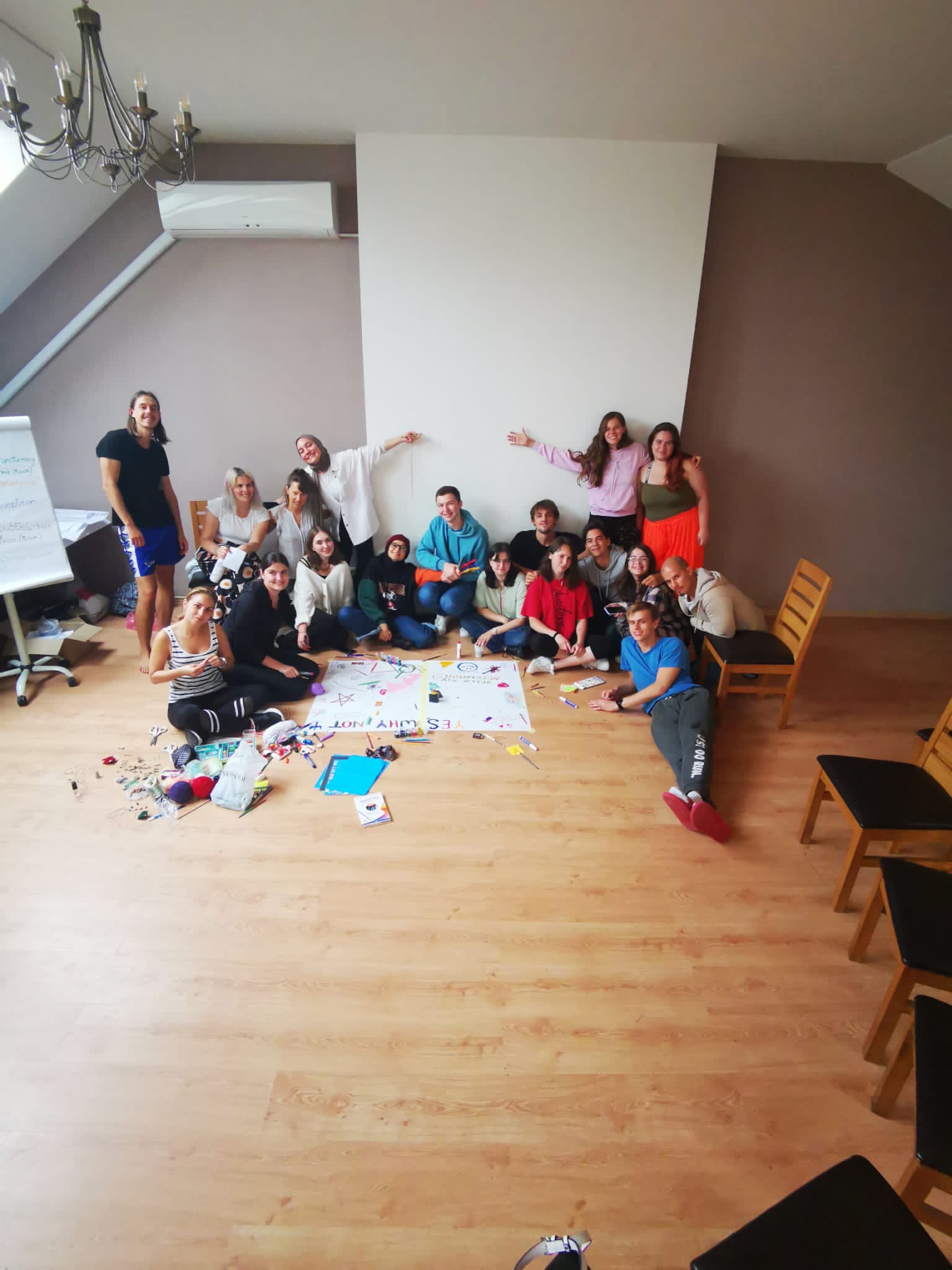Are we aware of the importance of mental health, and can we eventually help suicide prevention? These were the main topics and aspects of an Erasmus Training that happened in Vilkanastrai, Lithuania. I, Cvete, and Bojan were fortunate to participate in a project of huge importance, on a topic that is still considered taboo and is not talked about enough. So, here are some key points which were discussed.
The project started with Team Building activities, which were quite fun to participate in, and later proved to be necessary as the discussed topic was quite harsh and got personal very quickly. Surprisingly, apart from working great as a group, we were comfortable enough to talk about our own experiences with mental health issues and trauma by the end of the project.
Talking about identities. What are identities and how does one person have more identities? The personal “me” is presented differently for different people, sometimes to impress someone, sometimes to look as if we behave, and maybe sometimes to be professional. The common identities we have are those we present to our parents, friends, at the workplace, and even more that we are unaware of.
An important exercise was non-violent communication where we used certain phrases to express ourselves and it was quite helpful that we talked about emotions beforehand. Non-violent communication generally helps with feeling compassion through deep listening. During the next sessions, we got information about the basis of safeTALK for suicide prevention, which aims to identify people thinking of suicide, Tell, Ask, Listen and Keep-safe the suicidal person, and most importantly connect them with suicide intervention resources.
“All that has been integrated into NVC (Non-Violent Communication) has been known for centuries about consciousness, language, communication skills, and use of power that enable us to maintain a perspective of empathy for ourselves and others, even under trying conditions.”
– Marshall B. Rosenberg
Besides suicide prevention, we also talked about trauma, since it’s a big part of mental health, especially because it resembles PTSD, stress, and anger, and the person often dissociates, unaware, and finds coping mechanisms. It was important to understand the impact of trauma and to identify the signs, even the signs from childhood trauma or trauma from a certain event. We were able to open up and share our experiences with trauma among smaller groups and practice active listening.
Definition of childhood trauma by the National Institute of Mental Health:
“The experience of an event by a child that is emotionally painful or distressful, which often results in lasting mental and physical effects.”
A few of the afternoon sessions were dedicated to stress management, in the form of therapy, such as art, dance, and music sessions. They were good to reduce stress and improve the mood after spending the day discussing deep topics.
Overall, the Erasmus project went well, and it was a great learning experience. For the future of suicide prevention, it’s important for us to contribute to society and our community. We plan to do exactly that: bring awareness to mental health and suicide prevention among the young generation.
Further Reading:
- Janina Fisher, Transforming the living legacy of trauma (book)
- Evette Rose, Metaphysical Anatomy (book)
- Teal Swan, Completion process (book)
- Marshall Rosenberg, Non-violent communication (book)
- Gabor Mate, The Wisdom of Trauma (movie)
- Andrew Huberman (podcast, episodes of trauma)
- Wendy De Rosa
Marina Klimoska, Cvete Veleska, Bojan Krstevski
Sources:
World Health Organization | Mental Health
World Health Organization | Doing What Matters in Times of Stress
Center for Nonviolent Communication | What Is Nonviolent Communication?
Unyte Integrated Listening | What Is Trauma? – Definition, Symptoms, Responses, Types & Therapy
Grassroots Suicide Prevention | SafeTALK Suicide Alertness – Grassroots Suicide Prevention

